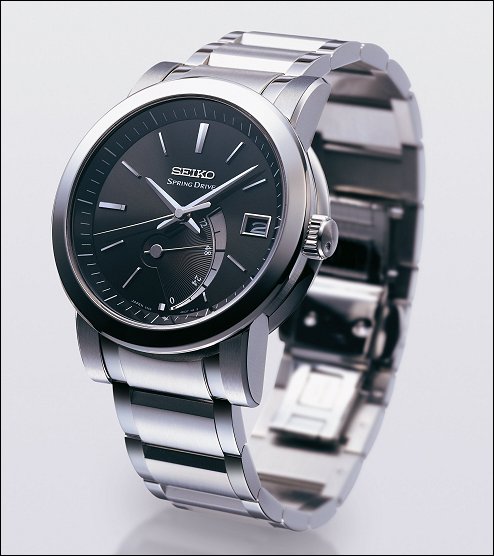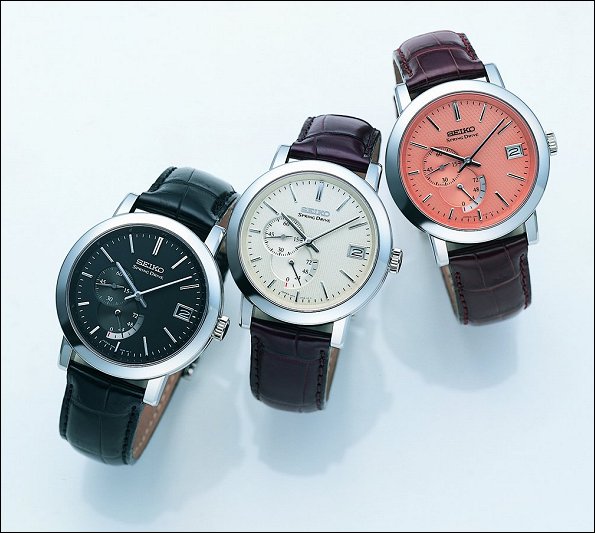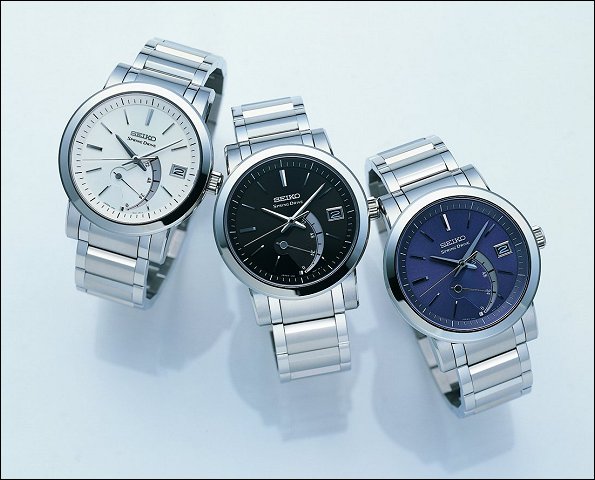|
PRESS RELEASE
SEIKO Launches Spring Drive, the Only Watch in the World to Represent the True Motion of Time.
Spring Drive is the most important new movement created by SEIKO since the quartz Astron in 1969. It is based on the foundation of all mechanical watch technology, a mainspring, but uses an entirely new system for time regulation that delivers the equivalent to 1 second per day accuracy, and, uniquely, glide-motion hands that represent the continuous, even motion of time. Spring Drive. The quiet revolution.
28 years in the making. Three key innovations
The idea of Spring Drive was conceived in 1977 by an engineer at SEIKO EPSON’s Suwa plant in Japan. The technical challenges required to realize the dream were immense and have taken 28 years to overcome. Spring Drive required the invention of new technologies in all areas of the craftsman’s art.
( * Spron 510 is the registered trademark of Seiko Instruments Inc.)
One-way circular motion
Spring Drive is unique because, while it has nearly all the characteristics of a classical mechanical watch, it does not require an escapement. The escapement uses the back and forth motion of a balance wheel to regulate the speed at which the spring drives the hands and it is this high-friction motion that makes the traditional mechanical watch vulnerable to inaccuracy and damage. The genius of Spring Drive is that all the motion in the movement is in one direction, so that the friction is all but eliminated. It is also this one-way motion that allows the hands to move with the unique glide-motion that reflects the real nature of time. Spring Drive is a natural revolution in timekeeping.
State-of-the-art watchmaking
To realize the Spring Drive dream, all SEIKO’s skills in the mechatronics of timekeeping have been utilized in both the traditional and electronic arenas.
The mainspring power supply, the gear train, the power reserve system and the Magic Lever are classical, mechanical watch components. Of the 276 components in each Spring Drive watch, 80% are those incorporated in mechanical watches. Like the highest grade mechanical watches, Spring Drive has 30 jewels to ensure low friction and high accuracy, and each watch is assembled by hand by SEIKO’s most skilled craftsmen and women.
The electronic components of Spring Drive are state-of-the-art. While other companies have attempted to develop a mechanical watch with an electronic time regulation system, only SEIKO has succeeded in realizing this dream. It required new advances in electro-magnetics to develop the braking system within the regulator and new advances in power generation and IC to convert part of the mainspring’s mechanical power to an electrical signal; just 25 nanowatts are all that is required to power the circuit and the crystal oscillator. This is 50% of the power needed in any conventional watch circuit.
It is SEIKO’s unique combination of skills in both mechanical and electronic micro-engineering that has made Spring Drive possible.
Unique designs for a unique technology
Spring Drive is offered in a design that is as unique as its technology. The inspiration for the design is in the circular motion that is at the heart of the engineering triumph.
The cases combine three circles, prominently visible in their side profile and the circle motif is also reflected in the engraved crown. Similarly, the dials express the circle concept, with the round sub-dials harmonizing with the overall case shapes. The circular motion itself is visible through the case back where the rotor and the glide wheel are clearly visible, moving evenly and smoothly.
Spring Drive is available in two versions. The first, with a steel bracelet is for the lover of modernity; its tough, almost sporty, execution highlights the ‘state of the art’ nature of the movement. The second, with straps of crocodile skin, expresses the tradition of classical watchmaking of which Spring Drive is emblematic.
Spring Drive: The Launch
Spring Drive is unveiled at the 2005 Baselworld Exhibition. As the focal point for luxury watches, Baselworld provides the perfect platform for the launch of Spring Drive and the whole SEIKO stand at Baselworld has been re-designed to showcase it.
Spring Drive will be launched to the public at the Seiko Center in Paris in September, and will thereafter be available in exclusive retail stores in the USA, Europe and elsewhere.
Spring Drive in numbers
Spring Drive is an important milestone in the history of watchmaking, and will take its place alongside other developments like the creation of the escapement, the invention of the mainspring and the harnessing of quartz, as defining moments in the story of time. The launch of Spring Drive is a breakthrough moment for the science of timekeeping. Its technological advances are many and varied, as its numerical statistics reveal:
|



